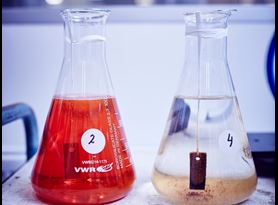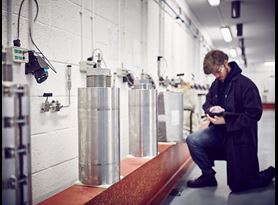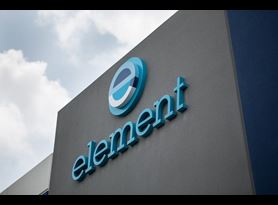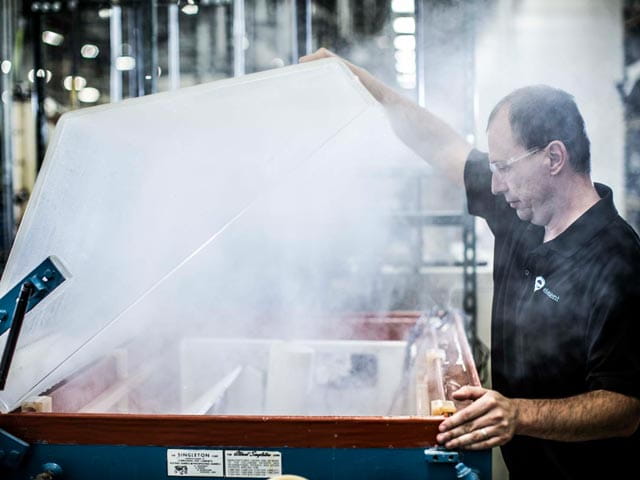Q&A: ASTM B117 Salt Fog Testing
Are you looking to learn more about ASTM B117 Salt Spray Testing (also called the Salt Fog test)? Explore our Q&A guide, which answers some common questions about the complexities of testing to this internationally recognized standard for verifying corrosion resistance of metals and coatings.
Why should you consider ASTM B117 Salt spray testing?
Our customers request ASTM B117 Salt spray and fog testing for a variety of reasons, Including:
- To assess and compare the corrosive resistance of different metals or finishes.
- To determine the corrosive tendencies in case of scratches on metal or coated surfaces (Combine with ASTM D1654 for comprehensive evaluation).
- To evaluate coating adhesion and corrosion creep (Combine with ASTM D3359 for a thorough assessment).
- To estimate corrosion resistance effectively in a marine environment, accounting for factors such as wetness, temperature, and salt fog exposure.
What are the outcomes of ASTM B117 testing?
The outcomes of a B117 Salt spray Test include the ability to assess the corrosion resistance or suitability of coatings, paints, and metals for exposure to corrosive environments through visual inspection. When combined with ASTM D3359 (tape adhesion), it allows observation of coating adherence to metal and the extent of corrosion creep. Additionally, the incorporation of ASTM D1654 (scribing) provides insights into how corrosion develops from a scratch through the paint or coating to the underlying metal. It's important to note that correlating these corrosive results to real-world conditions is not within the scope of this test standard and is challenging to predict.
When is it not recommended to use ASTM B117 as your corrosion test standard?
Our experts recommend avoiding ASTM B117 as the corrosion test standard if your product incorporates decorative chromium plate (nickel-chromium) on steel, zinc die castings, or cadmium plate on steel. Instead, it is suggested to opt for ASTM B368 or Practice G85, which are test standards specifically designed for assessing corrosion resistance in these materials.
What conditions will your materials be tested in, during an ASTM B117 Test procedure?
Testing for this standard is performed in specialized chambers built to ASTM B117 specifications. The temperature is maintained at 35C (+/- 2Deg. C ), with a neutral pH range of 6.5 to 7.2pH and a salt concentration of 5 parts sodium chloride to 95 parts ASTM D1193 Type IV water, introduced into the chamber at a specific quantity of Fog resulting in 1.0 - 2.0 mL / 80 cm2 per hour.
ASTM B117 does not dictate the length of exposure. The standard calls for continuous exposures in 24 hour blocks of time. The most popular durations are:
#1) 96 hour exposure
#2) 240 hour exposure
#3) 600 hour exposure
What will you receive on completion of an ASTM B117 Test procedure?
Following an ASTM B117 test, our corrosion experts will issue a test report, which will typically show:
- Photographs of the test samples pre & post exposure, or at any specified interval during the test.
- Calibration and compliance data of the salt fog chamber and supporting equipment.
- Detailed time/date entries of corrosive conditions, customer instructions.
- Element's accreditations and certification of the test performed.
What Questions should you be asking your team before requesting an ASTM B117 Salt spray Test?
Our experts will thoroughly brief you before beginning the test, common questions include:
- How many Units will you be testing? B117 strongly recommends testing multiple samples at a time to help establish variability of the results.
- How do you want test samples oriented in the chamber? This typically aligns with real time use of the product, or tilted to avoid pooling.
- At what stages of corrosion would you like photographs/ inspection to begin? Many of our customers request photographs of the sample pre and post exposure, at select intervals. Depending on your specifications we can stop the test at the first observed signs of corrosion, or simply document and continue.
- Do you want the sample to receive Post Test Cleaning? ASTM B117 recommends specimens be “gently washed in running water not warmer than 38C” to remove salt deposits to improve the inspection process. – Most customers want Element to wash the part after the test and to before returning the part to the customer.
- Is Compliance with ASTM B117 a mandatory requirement for your products? Compliance with ASTM B117 may be required in various industries and applications where corrosion resistance standards are essential. It is advisable to check specific industry regulations, your customer requirements, and product specifications to determine if adherence to ASTM B117 is mandatory for your particular situation. Our experts will be happy to advise on this if you have more questions about market access.
More from Element

Coatings Testing
Find out about our Oil & Gas coatings testing services and how we help to make certain that materials, products and pipelines are protected from corrosion, ultraviolet light, water penetration, heat, abrasion and chemicals.

Corrosion Testing Services
Find out about Elements extensive corrosion testing expertise in the Energy industry across a global network of laboratories.

High Pressure High Temperature (HPHT) Exposure Testing Services
We offer extensive services for the qualification and compatibility of polymer materials exposed to production fluids at high pressure and high temperature (HPHT).

Local laboratories, global platform
Doing business with one of our laboratories enables our clients' access to our global platform of expertise, capacity and capabilities.

